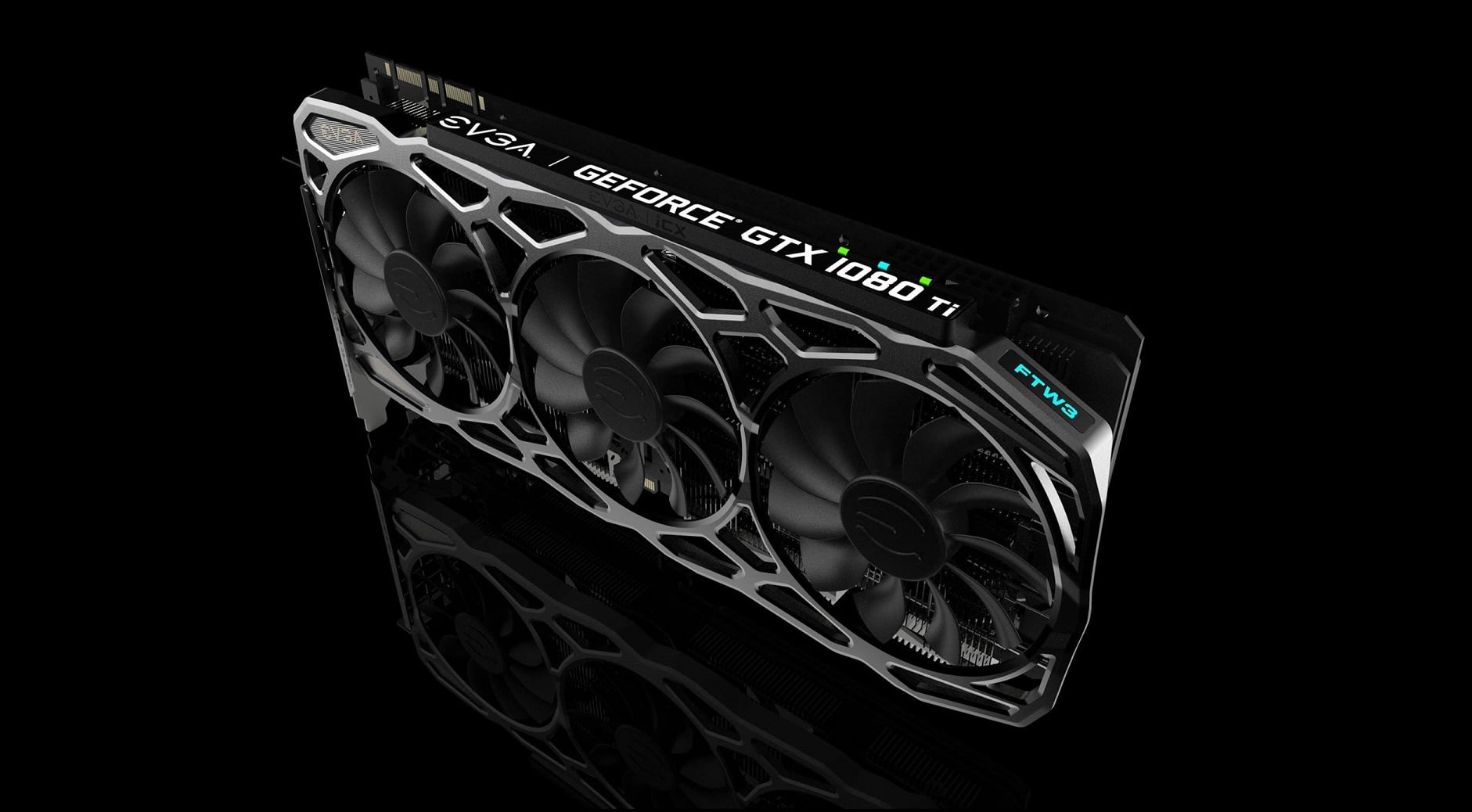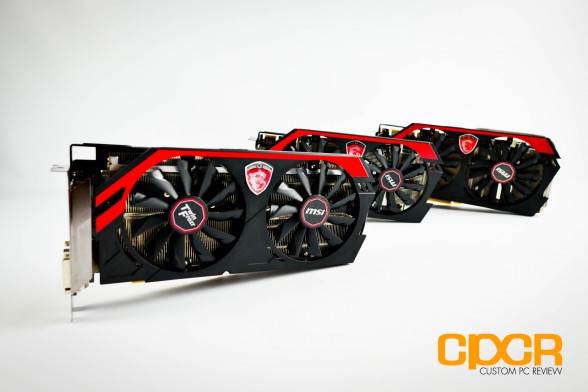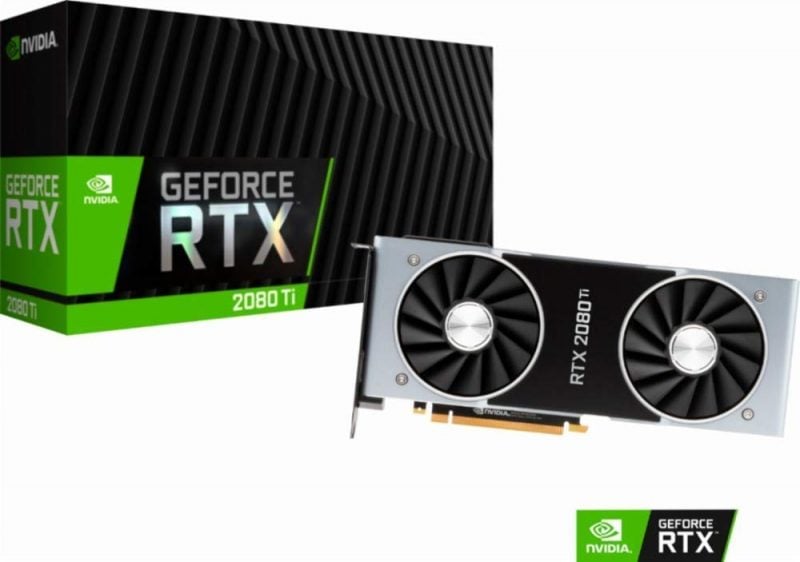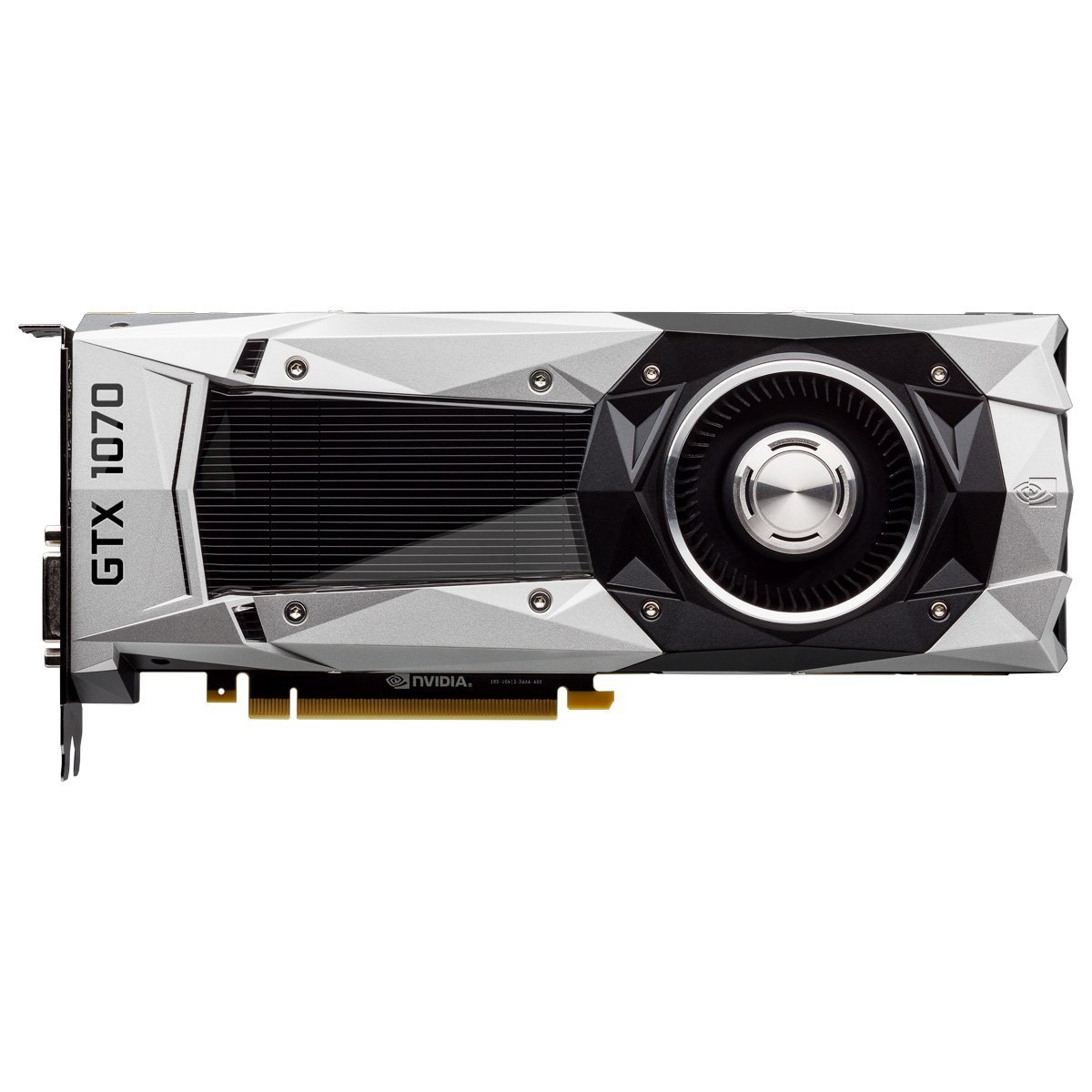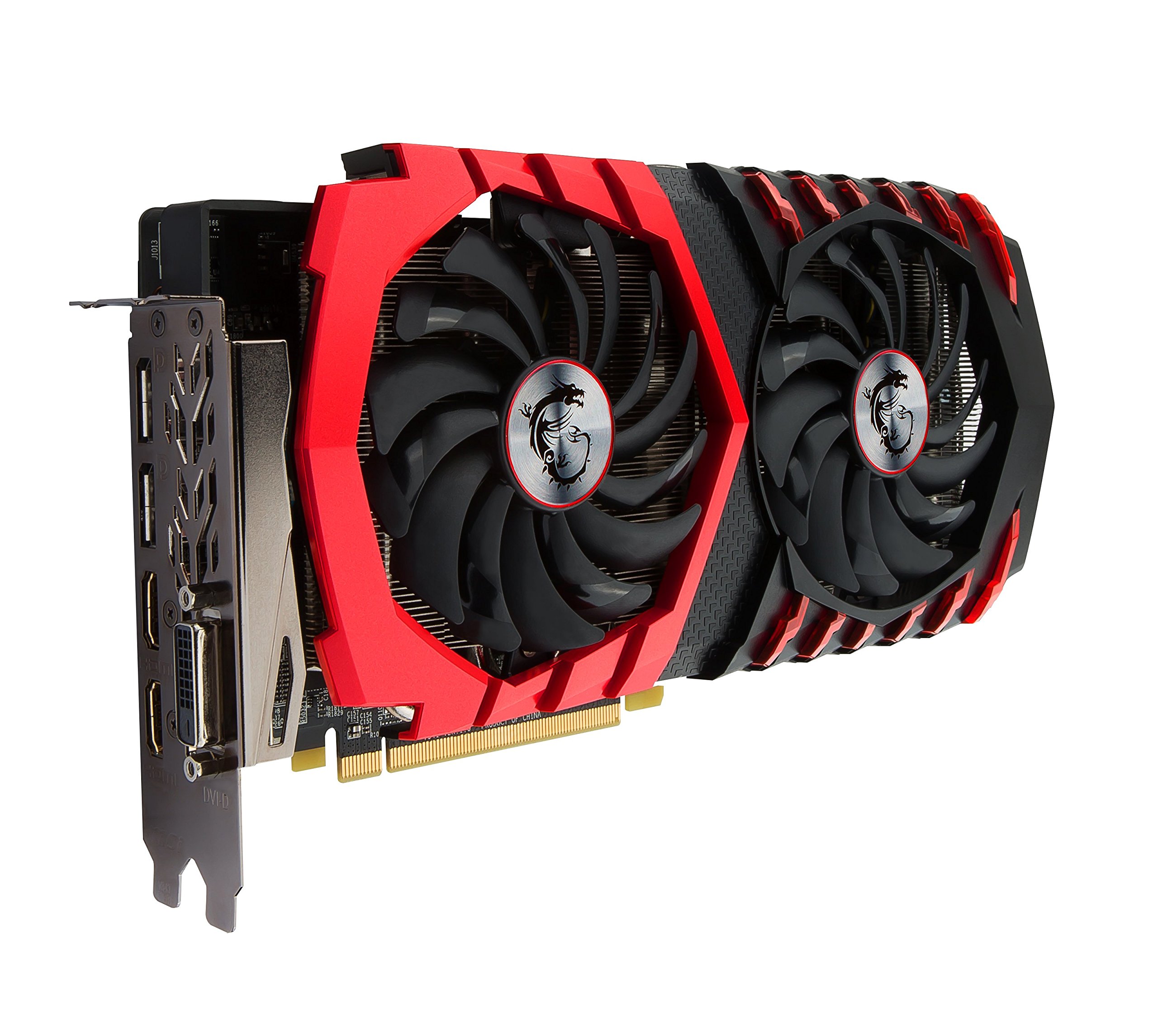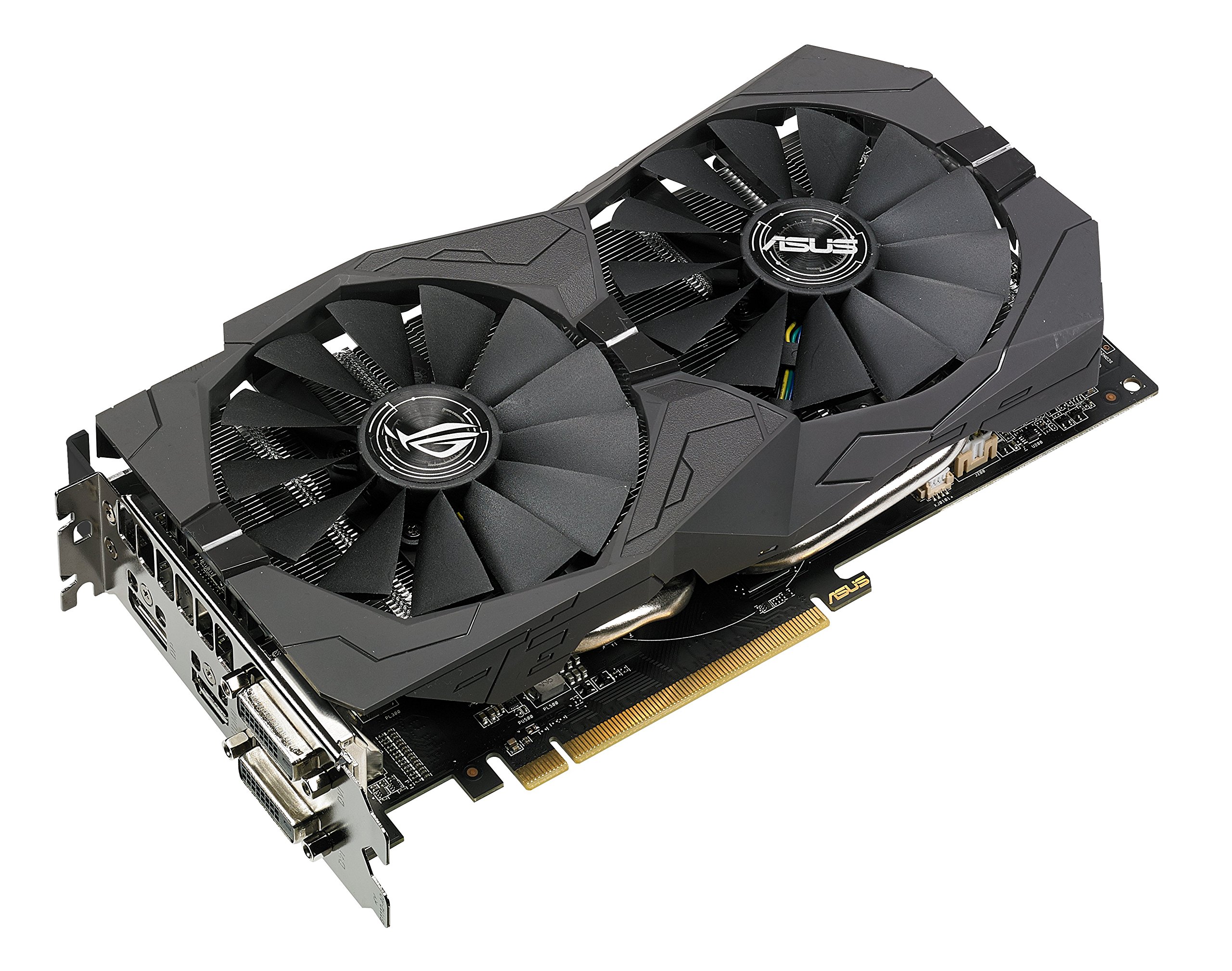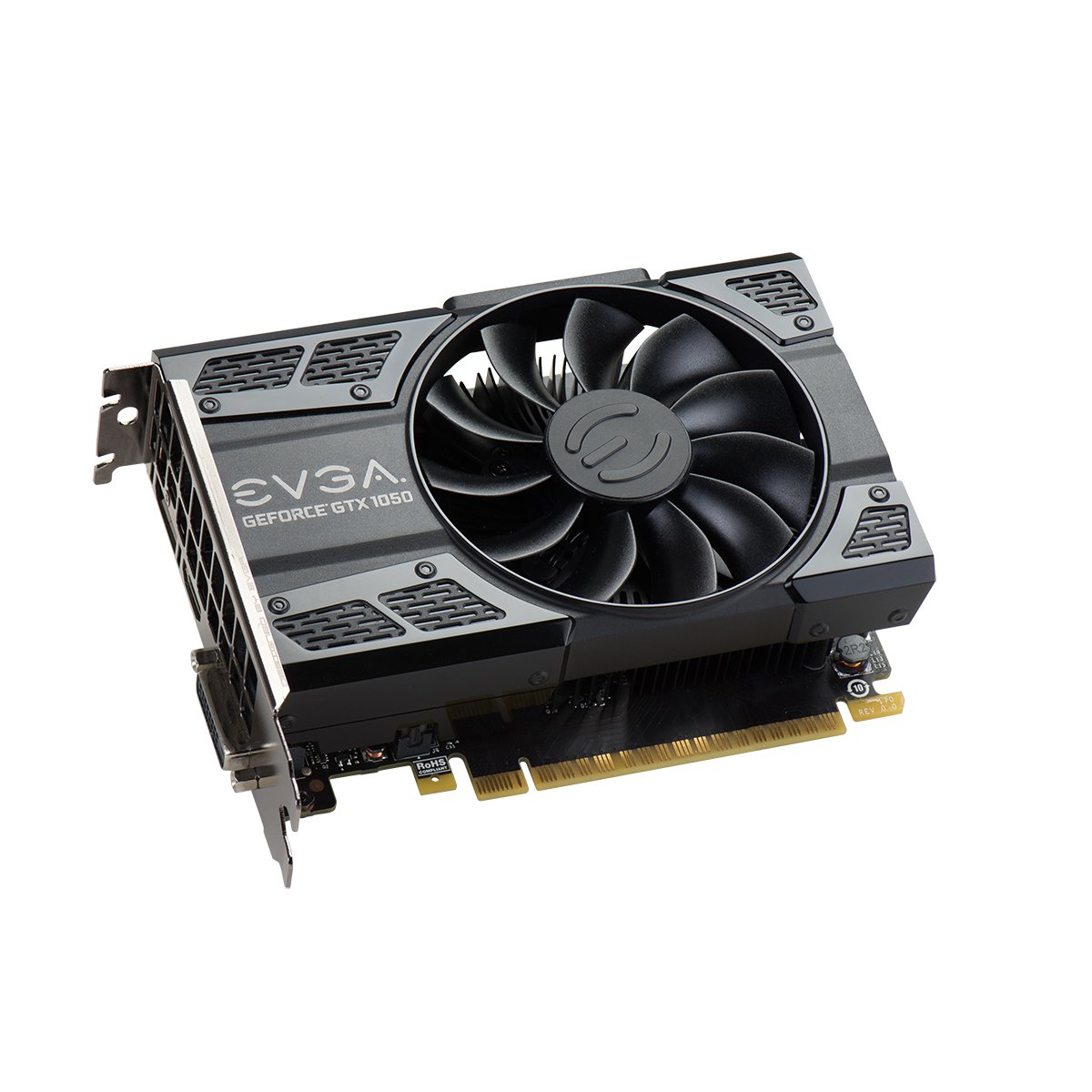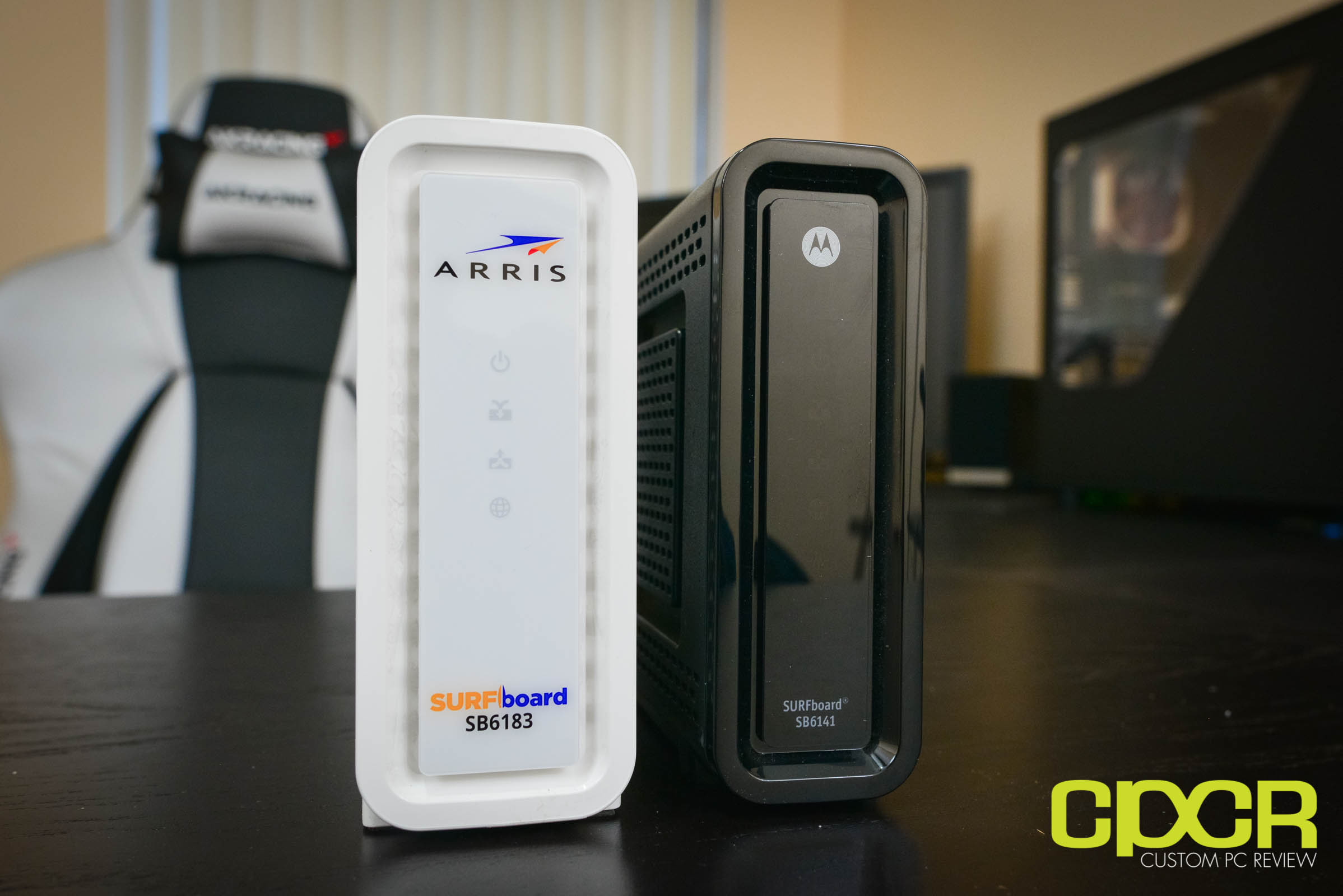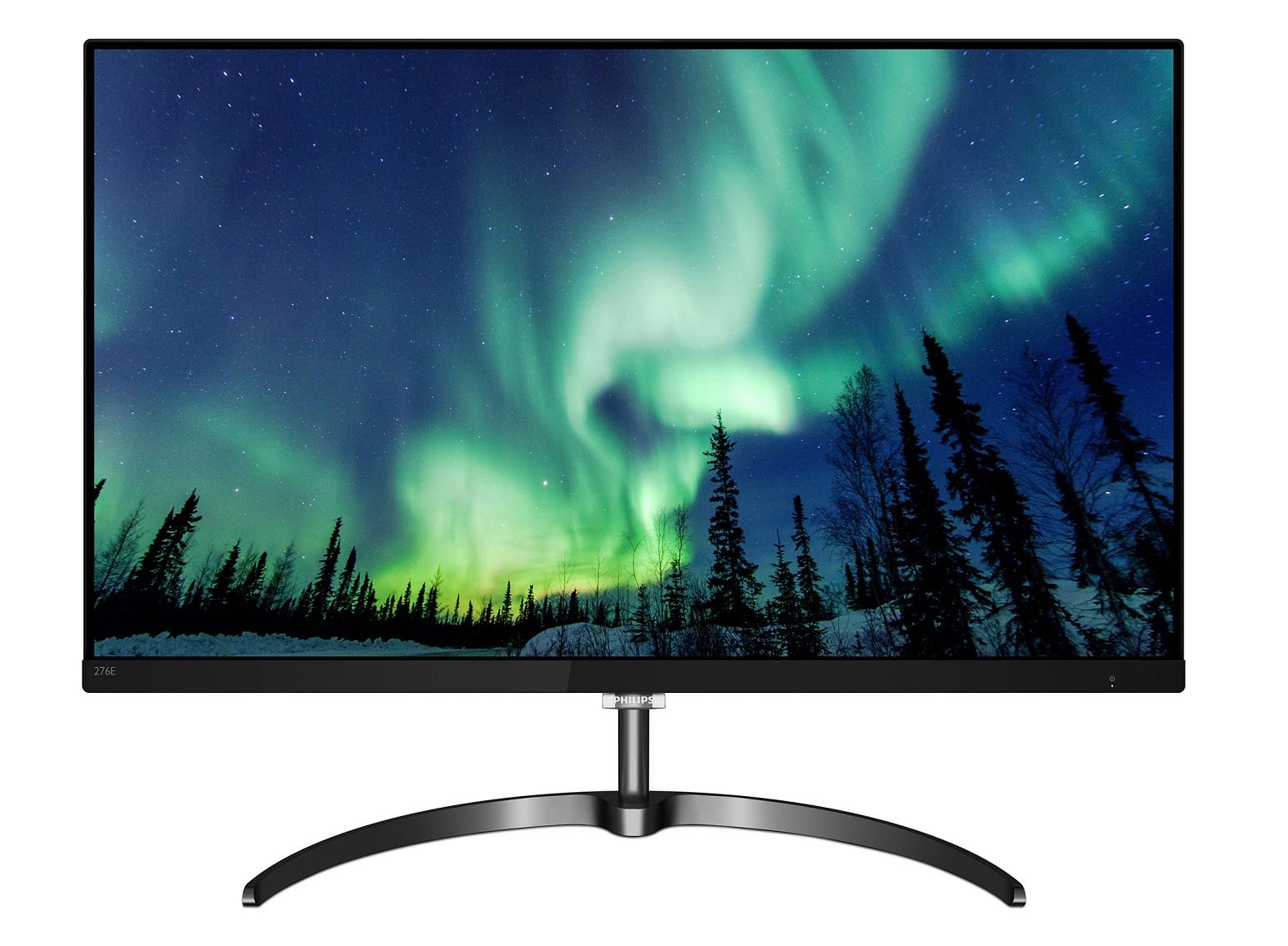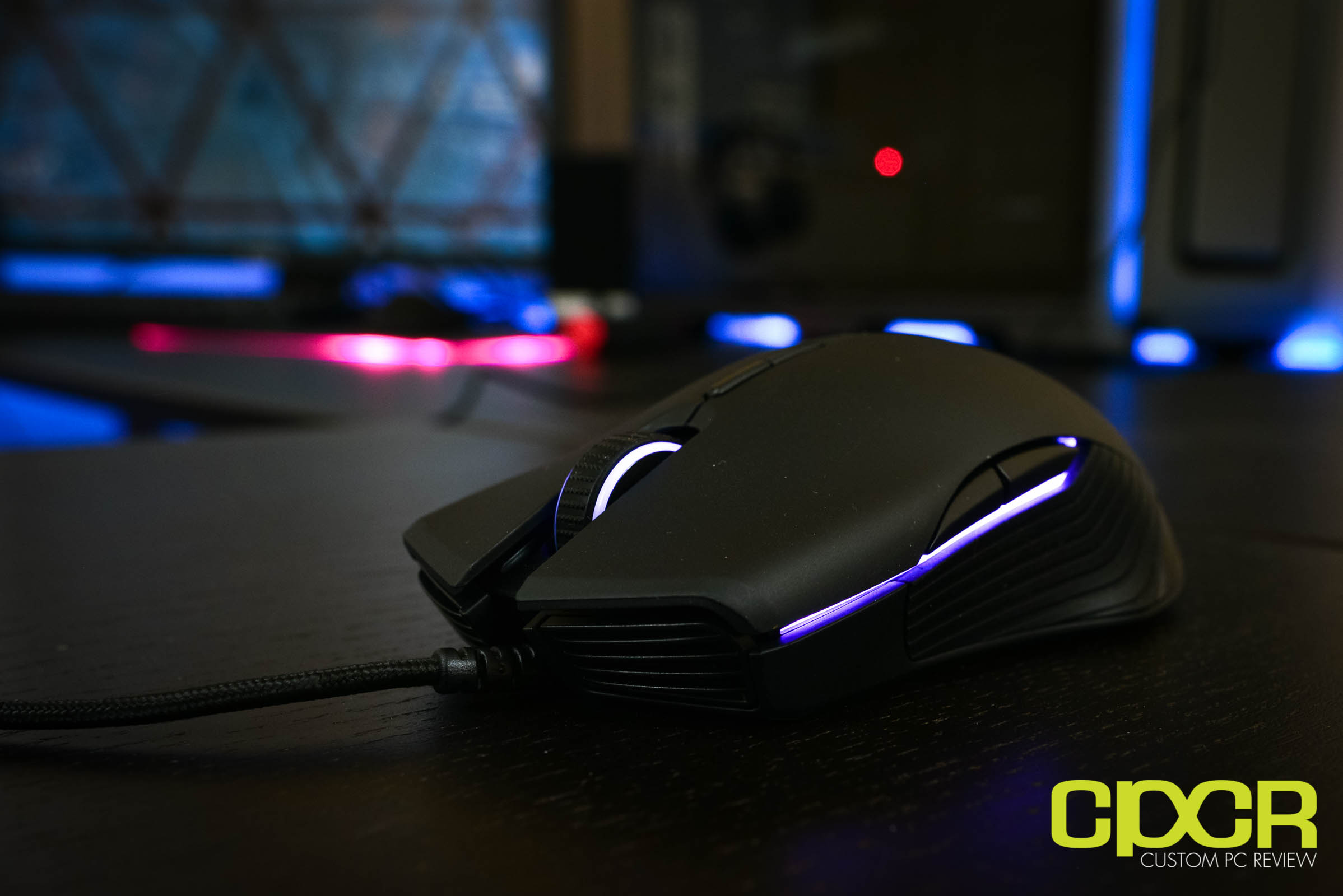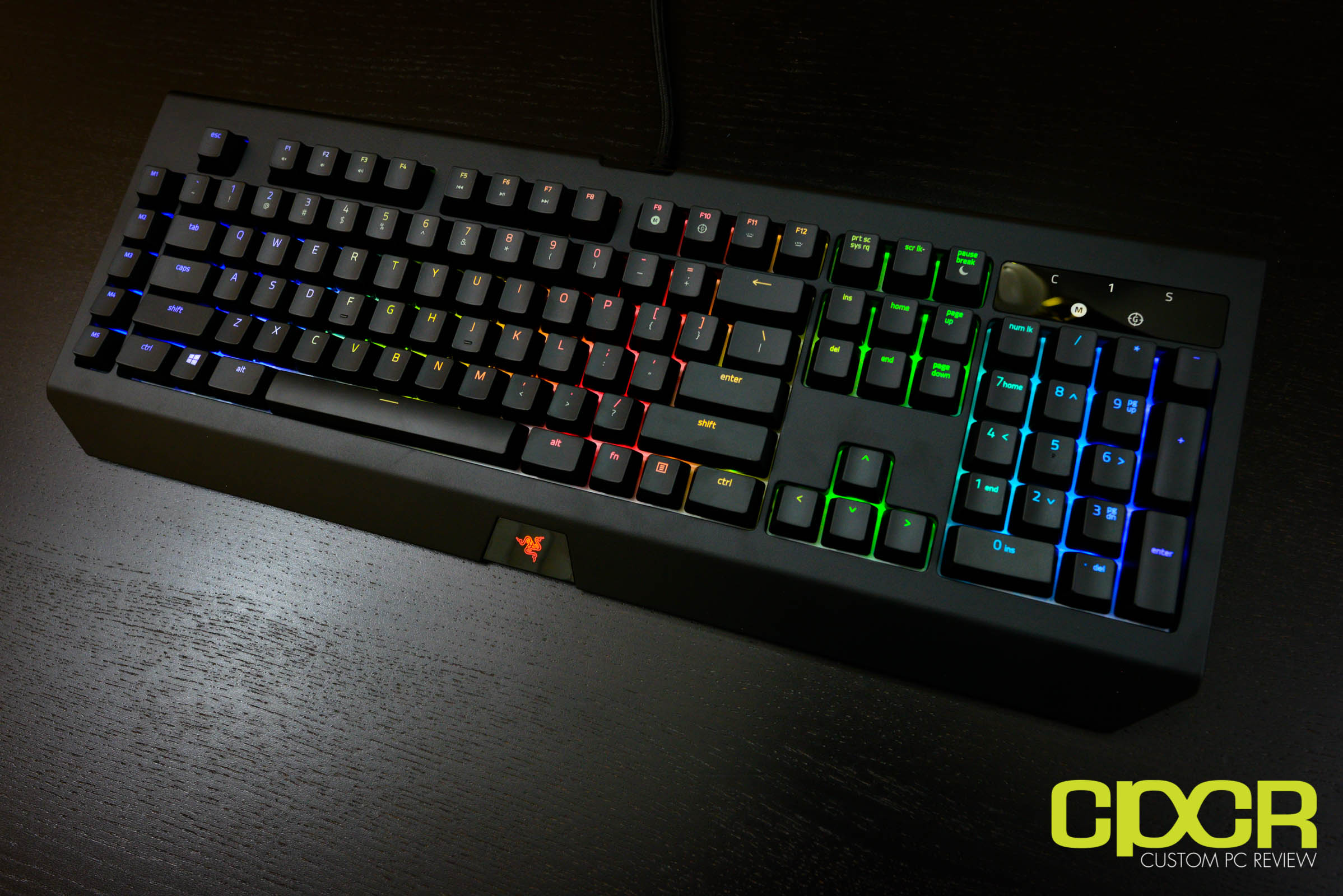Picking out the best graphics card for your PC is one of the hardest decisions for a gamer. Finding the best graphics card at the right budget can take hours and hours of research and can be a daunting task even for those well versed in technology. To make things easy, we’ve researched and compiled a list of the best gaming graphics cards whether you’re planning on doing casual gaming, competitive eSports, 4K gaming, VR gaming, or anything in-between.
Best 4K & VR Graphics Card
Nvidia RTX 2080 Ti
Nvidia late last year announced the RTX 2080 Ti, the fastest gaming graphics card on the market. Packing a punch when it comes to performance and compute as well as adding Nvidia’s most ambitious feature yet, ray tracing.
The Nvidia RTX 2080 Ti uses the Nvidia TU102 GPU. When compared to the next closest card on the block the RTX 2080, the RTX 2080 Ti has 1,408 more CUDA cores. The memory capacity has been raised to 11GB, and the memory bus to 352-bit from the 256-bit on the RTX 2080.
While all of this is fantastic, the fact that Nvidia released this card at launch as opposed to how they generally stagger the release has made many uncomfortable with the pricing, launching at over $1,000 generally around $1,200 and above making it sit closer to the pricing of previous Titan models and out of reach for most gamers. That being said the Die size has increased significantly with the addition of RT (ray tracing) cores and tensor cores which primarily are used in machine learning applications, and Nvidia’s DLSS technology.
If the too painful for your wallet, then the RTX 2080 is still a fantastic choice for 4K gaming with most eye-candies turned up.
[easyazon_link keywords=”GeForce RTX 2080 TI” locale=”US” tag=”cupcre06-20″]Click Here to Check the Latest Prices on Amazon[/easyazon_link]
Best 1440P & 1600P Graphics Card
Nvidia RTX 2060
With the lack of a competing card from AMD, for now the Nvidia RTX 2080 is an absolutely fantastic option for the high-performance scene. It delivers excellent performance at 1440p and can comfortably handle most VR titles.
This card is very similar in performance if not better than last years GTX 1070 Ti with the addition of ray tracing cores, which was a fantastic option for 1440P gaming, though we would recommend you turn ray tracing off in most titles until DLSS is available.
As the (slightly) smaller cousin to the RTX 2070, the RTX 2060 comes with 1,920 SMPs clocked at 1,365MHz (1,680MHz boost), 6GB of GDDR6 memory running on a 192-bit memory bus. Its 160W TDP requires only one 8-pin power connector to drive.
Currently, the RTX 2060 can be found between $349 and $379 for more premium models. It’s $200 cheaper than the RTX 2070 and delivers about 80 to 90% of the performance depending on the title.
[easyazon_link keywords=”RTX 2060″ locale=”US” tag=”cupcre06-20″]Click Here to Check the Latest Prices on Amazon[/easyazon_link]
Best 1080P Graphics Card
AMD Radeon RX 580
The AMD Radeon RX 580 and the Nvidia GeForece GTX 1060 basically runs neck and neck. Both can easily handle demanding games at 1080p and run adequately at 1440p. We chose the AMD Radeon RX 580 because it can be had for about $10 less on average compared to the Nvidia GTX 1060.
AMD’s Polaris architecture made some huge waves last year. Made using TSMC’s 14nm FinFET process, AMD has finally been able to make strides in power consumption and performance. Their shining showcase product, AMD Radeon RX 580, is the perfect candidate for the job.
The AMD Radeon RX 580 uses the Polaris 10 GPU with 2,340 SMPs and can be configured with up to 8GB of GDDR5 memory on a 256-bit memory bus. It delivers almost the same performance as the AMD Radeon R9 390 while drawing almost half as much power (150W vs 275W)
[easyazon_link identifier=”B06Y19NMP3″ locale=”US” tag=”cupcre06-20″]Click Here to Check the Latest Prices on Amazon[/easyazon_link]
Good 1080P Graphics Card
AMD Radeon RX 570
The AMD Radeon RX 570 slots into a peculiar slit between the GTX 1060 and the Nvidia GeForce GTX 1050Ti. In terms of performance, the AMD Radeon RX 570 wins hands down against the Nvidia GeForce GTX 1050 Ti. With that said, it does cost $30 more on average. We feel like the price premium is worth the extra bit of performance considering $170 is still a very palatable price for most budget conscious gamers.
The Polaris 10 GPU used for the AMD Radeon RX 570 has two Compute Unit disabled, with a total of 2,048 SMPs instead of the 2,340 on the AMD Radeon RX 580. Memory is configured at 4GB GDDR5.
For a sub-$200 card, the AMD Radeon RX 570 delivers good 1080p performance across the board. If you’re looking to put together a mid-range gaming rig, then the AMD Radeon RX 570 should be at the top of your consideration list.
[easyazon_link identifier=”B06Y5WGXX3″ locale=”US” tag=”cupcre06-20″]Click Here to Check the Latest Prices on Amazon[/easyazon_link]
Best 720P & eSports Graphics Card
Nvidia GeForce GTX 1050
The AMD Radeon RX 560 recently submerged its price to an enticing sub-$100 pricepoint. That alone, however, wasn’t enough to edge out the Nvidia GeForce GTX 1050. The Nvidia GeForce GTX 1050 more than justifies its meager $10 markup in performance, beating out the AMD RX 560 in most titles.
The Nvidia GeForce GTX 1050 is Nvidia’s entry offering using its Pascal architecture. Compared to the integrated graphics, the GTX 1050 brings a huge step up in performance.
While it will struggle to handle triple-A titles with all effects turned up, the GTX 1050 has no problems churning out high-frame rates in popular eSports titles such as Overwatch, Counter Strike: Global Offensive, League of Legends, DOTA, and Starcraft. It can even comfortably handle older demanding titles such as GTA 5.
[easyazon_link identifier=”B01M9FD3PC” locale=”US” tag=”cupcre06-20″]Click Here to Check the Latest Prices on Amazon[/easyazon_link]
Graphics Card Buying Guide
GPU Model Names/Numbers
When purchasing graphics cards, you’ll most often see products from brands such as ASUS, Gigabyte, MSI, EVGA, XFX, and others, but the actual “brains” of the graphics card, the GPU (Graphics Processing Unit), generally comes from one of two manufacturers, AMD or Nvidia. As AMD and Nvidia have a relatively standard product naming system for their GPUs, this is why all graphics cards seem to use the same or a similar name despite being manufactured by different companies. For example, the EVGA GeForce GTX 1080 FTW ACX 3.0 is powered by the exact same GPU as the ASUS GeForce GTX 1080 ROG STRIX. As these graphics cards use the same GPU, performance is similar between them although each company will likely use a different cooler design or overclock the core/memory clocks to differentiate their specific product.
Despite each of the graphics cards makers attempt to differentiate themselves, as long as the GPU is the same, the performance across all graphics cards carrying the same GPU is ultimately going to be relatively similar. As such, it’s important to know how to identify and differentiate GPU model names/numbers.
As I’ve said previously, the two major GPU manufacturers are AMD and Nvidia and thankfully both companies offer a fairly easy way to identify where each of their GPUs sit in terms of performance.
On the AMD side, the GPUs currently use the naming scheme Radeon RX XXX. For example, Radeon RX 580. The first number represents the generation of the GPU, so the higher the first number, the faster the GPU when compared to a GPU from the same class in a previous generation. For example, the RX 580 should be faster than the RX 480. The second and third numbers represent the class so the higher the second number and third number, the faster the GPU when compared to GPUs in the same generation. For example, the RX 580 will be faster than the RX 570.
On the Nvidia side, the GPUs currently use the naming scheme GeForce GTX XXXX. For example, the GeForce GTX 1080. This naming system works the exact same way as the AMD naming system. In this case, the 10 represents the generation, so a GTX 1080 will be faster than a GTX 980. This is followed by the class so a GTX 1080 will be faster than a GTX 1070. In addition, Nvidia GPUs may sometimes get a “Ti” designation which also comes with a performance improvement over the non-Ti versions. Nvidia also offers their Titan series GPUs which represent the fastest GPUs Nvidia manufactures.
CUDA Cores / Stream Processors
Like CPUs, GPUs use cores to process instructions. In Nvidia GPUs, the cores are called CUDA cores while in AMD GPUs, the cores are called Stream Processors. As GPUs are designed to process data in parallel, generally speaking more CUDA Cores or Stream Processors will provide better performance.
That said, core counts can only be compared when comparing GPUs of the same generation and same manufacturer. For example, a comparison of CUDA cores between two Nvidia GeForce GTX 10 series GPUs or a comparison of Stream Processors between two AMD Radeon RX 500 series GPUs will provide a fairly accurate idea of how much more performance to expect however, this will not be accurate when comparing two GPUs from different generations such as an AMD Radeon RX 580 and AMD Radeon RX 380. Similarly, comparing CUDA Cores and Stream Processors will not work as the two graphics processing architectures are very, very different.
VRAM and the Memory Interface
Similar to the CPU, the GPU stores information that’s ready to be processed in its internal RAM. This can include stuff like texture files, instructions, and more. While graphics cards manufacturers have used high amounts of VRAM as a marketing gimmick to convince people to purchase their custom design graphics cards, having more VRAM isn’t necessarily going to improve performance. Instead, what does typically improve performance is higher speed VRAM such as GDDR5 or HBM (High Bandwidth Memory), and a large memory interface.
In terms of the types of VRAM used in a graphics card, there are currently three different types we usually see. These include GDDR3, GDDR5 and HBM/HBM2. GDDR3 is the slowest of the bunch with a rated bandwidth of around 20GB/s give or take depending on the frequency of the specific memory being used. In contrast GDDR5 is capable of up ~40-64GB/s and HBM2 is capable of up to ~256GB/s. As graphics tend to be latency intensive, the additional bandwidth allows more data to be transferred faster, which is most crucial when displaying high resolution graphics or VR graphics with all the quality settings cranked to maximum.
Closely linked to VRAM is also the memory interface, or the memory bus. This is typically advertised in bits. For example, a 128-bit memory interface, 256-bit memory interface, 512-bit memory interface, and others. In simple terms, the memory interface can be thought of as the amount of lanes that connect the VRAM to the GPU. As such, the faster the VRAM combined with a larger memory interface is ideally what you want to get high framerates when working with high resolution, high quality graphics.
While generally high amounts of VRAM doesn’t necessarily improve graphics performance, there is a caveat. In cases where high amounts of VRAM are needed such displaying high resolution, high quality textures, lots of anti-aliasing, and other visual candy, high amounts of VRAM is necessary to be able to store all the files in VRAM as running out of VRAM could be disastrous from a performance standpoint. As such, those planning on playing games at 4K or above or playing VR games are recommended to purchase a graphics card with more than 8GB of VRAM.
Final Thoughts
Question about why we chose X and not Y? Ask us in our community forums! All you have to do is visit our forums, register, and post in the appropriate section! If you’d like more immediate help, feel free to swing by our community Discord channel.
Also don’t forget to join us on Facebook, Twitter, Google Plus, or YouTube to be updated on the latest news, reviews, tutorials, custom computer builds, and more!

